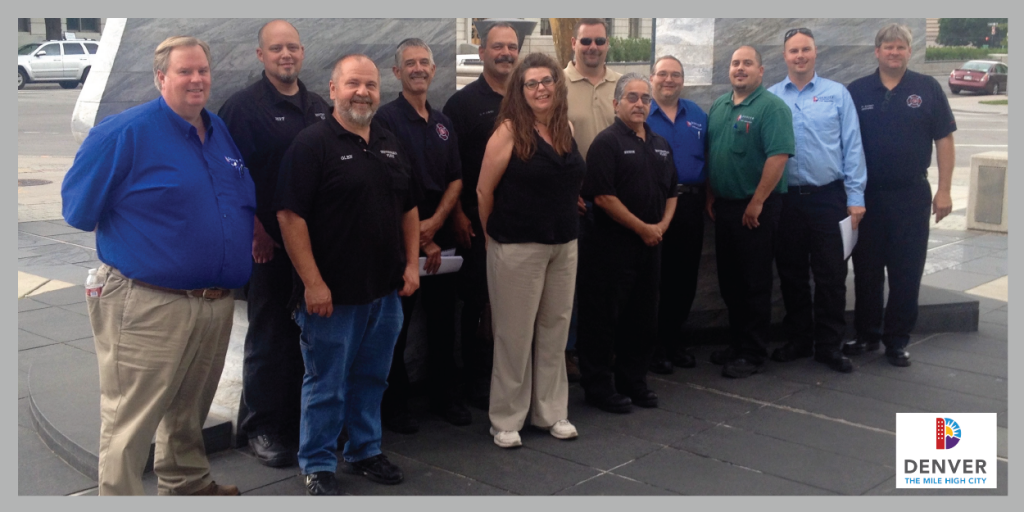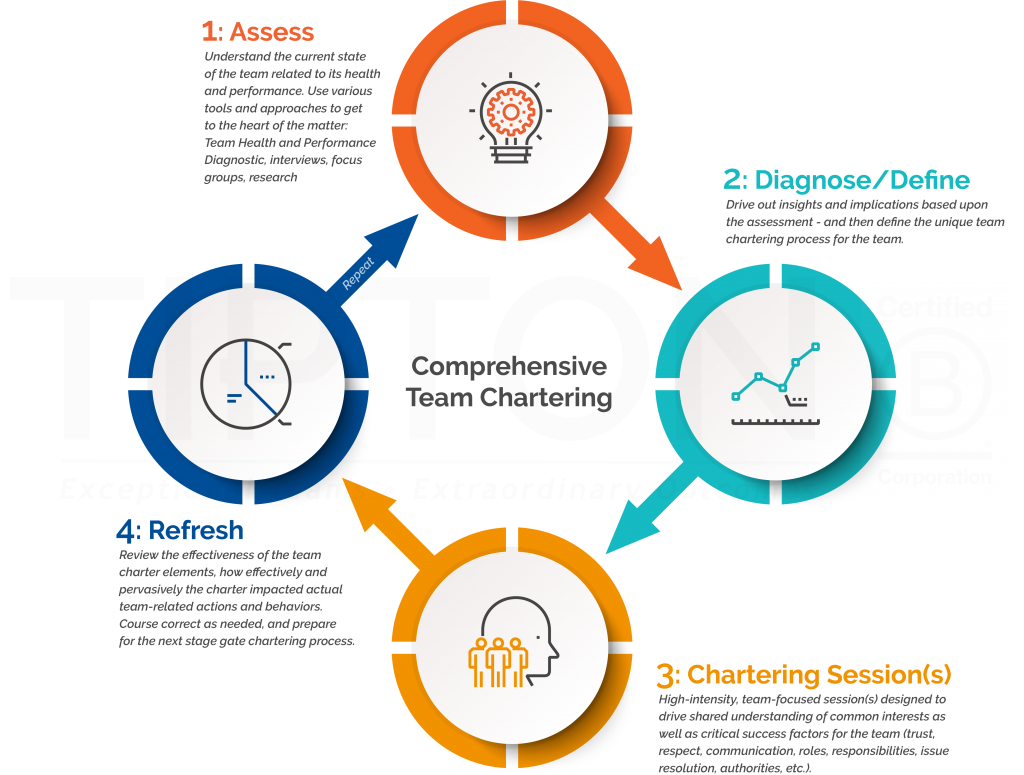We know one thing for sure — teams (and organizations) with
healthy team dynamics perform better. Every. Single. Time.
Rationale:
In our 40+ years of leading teams, we’ve learned that the most successful projects and organizations are delivered by teams who charter themselves effectively. These teams apply intentional and meaningful attention to team dynamics (the “behaving and communicating of the team”), they identify stakeholders, and they establish operating agreements, strategic priorities, goals and measures, decision-making frameworks, and roles and responsibilities during project initiation and throughout project execution.
With clarity and alignment around a meaningful and relevant charter, individual team members will avoid making personal interpretations and decisions. For projects, this means project-related risk to scope, schedule, budget, and quality is mitigated. For leadership teams, this means the organization enjoys a common, aligned set of expectations and overall cultural experiences. In both cases, it means that team members are highly engaged and satisfied with their experience.
Process:
Team chartering is a process, not an event. Authentic alignment, psychological safety (the idea that what needs to be said is said, when it needs to be said – without fear of repercussions or retribution), trust and transparency aren’t created in a single, procedural meeting (e.g., the proverbial “partnering session”). Team chartering is most effectively done as part of major stage gates in a project – initiation, execution (and at key stage gates within execution like planning, design, construction, warranty, etc.), and close-out, or at key points “in the life of” a leadership team (significant events, new leadership team members, etc.).
Get Good at Leadership Alignment (Webinar Replay):
Below we show the high-level map we use in chartering high-performing teams (CLICK HERE to download PDF version):
Team Charter Starter
The Foundation for a Healthy Team
When addressed proactively, a team charter defining a team’s purpose, their relationship(s) with stakeholders, operating agreements, strategic priorities, goals and measures, decision-making frameworks, and roles and responsibilities can result in remarkable outcomes. However, when comprehensive team chartering is not an option, or a project is well underway, know that creating alignment around any of the eight components of a team charter can improve (or reorient) a project team’s trajectory and mitigate risk to scope, schedule, budget, and quality.
To help you start chartering your teams, we’ve outlined the eight components of a team charter, the value of having aligned answers to each, and the questions we use to set the stage when facilitating work sessions to arrive at an “endorsable” (by all) team charter:
1: Articulate the Team’s Purpose
Why do it?: The team purpose is the sole reason – the why – members of this team are coming together. Bringing the team back to its agreed-to purpose – whether that is at major stage gates, when onboarding new team members, or when the group finds themselves at an impasse – a defined team purpose helps level set the group, strip away ambiguity, and re-establish that the whole is greater than the sum of its parts.
Starter Question: What is the purpose of this team?
2: Identify Stakeholders
Why do it?: Identifying stakeholders provides clarity regarding not only who all the stakeholders are, but their relative proximity and importance to the project. When teams are able to bucket stakeholder groups into those with actionable roles in the project, those who will influence the project, and those who need to be kept informed about the project, it helps set appropriate expectations for and with each stakeholder group communication and level of involvement.
Starter Question: Who receives the outcomes of this team’s work?
3: Establish the Team’s Operating Agreements
Why do it?: By developing agreements for how the team intentionally decides to operate, communicate, and interact with each other, we are able establish behavioral expectations (trust, transparency, psychological safety), rather than accept behaviors that can lead to project risk (siloed information, loudest voice wins, placing an individual or organization above the objectives of the team).
Starter Question: How will this team work together to accomplish their purpose?
4: Establish the Team’s Strategic Priorities
Why do it?: Strategic priorities are the guiding force behind aligned, program-centric decision making. They act as a compass – that won’t tell you exactly what decision to make, only whether the decisions being made are leading the team in the right direction. Often, strategic priorities are based on company / organizational culture, mission, or high level strategic plans that a team is charged with delivering (its purpose).
Starter Question: What strategic lens will this team use to make decisions and create deliverables?
5: Create Goals and Measures
Why do it?: Creating goals and measures allows the group to understand – specifically – what things the team is doing in order to deliver its purpose. Further, by establishing measurement criteria for goals, the team can assess whether progress is being made in achieving their goals. This work is especially useful for understanding what the team is doing from a project perspective.
Starter Question(s): What are the primary goals and measures this team will use to know whether it has been successful (achieved its purpose)? When finished, in a sentence or two, articulate what success looks like.
6: Develop the Team’s Decision-Making Approaches
Why do it?: Decision-making models allow interconnected-but-distinct organizations the benefit of understanding why, who, how and when decisions will be made throughout the project duration. They are also used to establish an “issue resolution” process – before issues arise – to resolve unexpected changes in a project’s scope, schedule or budget.
Starter Question(s): How will this team make the cathartic decisions (answers the “why” behind an issue) to achieve their purpose? How will this team make the salient decisions (answers the “what, when, how, and who” behind an issue) to achieve their purpose? How will this team resolve issues when at an impasse (issue arises that doesn’t fit the mold, etc.)?
7: Define and Distribute Roles and Responsibilities
Why do it?: By defining the roles and responsibilities required for a successful project or outcomes and allocating them to team members, everyone will have a clear understanding of how they, and others, will be held accountable to the team and support its purpose.
Starter Question: How is each person accountable to the team and its purpose?
8: Endorse the Charter
Why do it?: The act of signing or verbally acknowledging one’s commitment to a team and its purpose naturally produces a moment of reflection regarding each member’s alignment with all elements of the charter. Further, the explicit nature of endorsing a charter seats the bond among team members – it underpins healthy team dynamics throughout the project’s duration.
Starter Question: Do you commit fully to this charter and fulfilling the purpose of this team?






